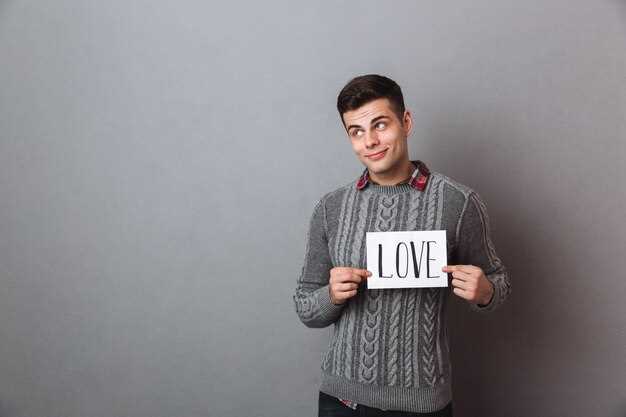Do this: after the meeting, send a single short message the next evening that suggests a specific, low-effort plan (coffee or a walk) and nothing more. One sentence is enough; be brief and polite. If he replies you can take the next step, if he doesnt respond within 72 hours treat the silence as information – he wouldnt be prioritizing contact, and chasing rarely changes that.
Interpret silence with specific signals: if he normally sends first messages and suddenly doesnt, that pattern means something different than a one-off delay. Many people are not ready, some are distracted by work or addicted to social feeds, and others literally have other shit going on. Look at whom he interacts with elsewhere, how often he sends anything, and what he finds important – a single word or gesture rarely tells the whole story, the pattern of things does.
Concrete rules to follow: one follow-up within 24–48 hours, no more than two attempts total, move your attention elsewhere because time takes value. If youre questioning whether to reach out again, rather expand your horizons and meet others; maybe he comes around, though you should not stall your own plans waiting. Use brief, polite messages and avoid long explanations – telling, consistent behaviour is the best indicator you can learn from.
10 possible reasons he didn’t text after a great date
1. Send one concise, thoughtful message within 24 hours that references a specific moment from the evening; this improves your chances he will respond and gives him space to reply later without pressure, so you can keep hope realistic.
2. Busy schedule: he cannot reply immediately because free time is limited; he may be trying to clear obligations and plan to answer later rather than rush an offhand message.
3. Cold feet: he might think the connection was strong and then overanalyze it, getting cold feet and delaying any outreach while he sorts his thoughts.
4. Fear of over-texting combined with multiple app interactions: his inbox may be filled, he’s juggling online conversations and profiles, and he avoids sending more to not appear clingy.
5. New matches shifted priorities: he may have started chatting someone else on a profile or a female contact, and because many women and men explore options, immediate follow-up can drop.
6. Protective pacing: he’d rather hold off on sharing feelings to avoid a message that could ruin a potential connection; cautious pacing can look like silence but is deliberate.
7. Mixed signals: he’s watching how you look and act, reading cues closely to decide if he’s truly interested before investing time in sharing more personal content.
8. Low-communication style: some people are limited communicators and often leave messages unread because their inboxes are filled; absence of an answer isn’t definitive proof of disinterest.
9. Social caution after hearing examples: he may have heard stories about ghosting from friends or seen negative patterns among women and men, so he’s trying to avoid repeating mistakes and delays his response while evaluating.
10. Miscellaneous possibilities along practical lines: technical issues, work travel, or simple indecision. Review these reasons closely, assume limited conclusions, and if you remain interested, send a low-effort check-in to assess the real chances without escalating expectations.
He’s genuinely busy – how long to wait before following up
Wait 4–5 days before sending one concise follow-up message; if he explicitly mentioned being swamped with work, travel, or fitness-modeling commitments, extend that window to 7–10 days.
If the initial exchange included lots of emojis, rapid replies or clear plans for the weekend, nudge after 48–72 hours; if the interaction was brief polite texts with no follow-up plan, wait a full week. This happens because limited screen time or shifting schedules means you can misread interest from a single interaction.
Write one short line that references a specific moment to make him laugh or recall a shared detail – avoid confrontational language, accusations, or trying to play smart games. Example structure: mention the shared joke, ask about availability, sign off without pressure. Limit emojis to one and keep tone curious, not eager.
Once two messages (initial plus one follow-up) have passed with no reply, move on. They may eventually answer, but data shows response likelihood drops sharply after 48–72 hours without engagement; continuing to message cannot improve that probability and often harms your impression.
Adopt a non-confrontational mindset: give him space to overcome a busy stretch, but don’t assume exotic explanations (drugs, ufos) or craft accusatory scripts. If you’re a female reaching out or if plans felt exclusive, consider a brief phone call after a week rather than repeated messages. Prioritize your time, protect your dignity, and let future dates show whether he’s truly interested or merely caught up with life.
He’s overwhelmed by personal issues – how to check without prying
Send one brief, low-pressure message that gives him space and a clear next step: short, specific, and easy to answer.
- Timing: wait 3–5 days after he stopped responding; if nothing, send one follow-up at 7–10 days and then pause. Repeated immediate pings increase pressure and reduce reciprocation.
- One-line templates (use once):
- “I enjoyed our time – no rush. If you need space, that’s fine; tell me when you’re up for a chat.”
- “Hope things are okay on your end. I’m around when you’re ready.”
- Signals to check without asking personal questions:
- Public activity from him: recent posts, stories, or profile updates – frequency changes can indicate workload or being down.
- Content hints: photos with kids, work sites, or mentions of moving/ building projects suggest practical constraints rather than lack of interest.
- Tone shifts: fewer emojis or shorter captions often reflect a different mindset; youthful banter replaced by serious posts signals heavier issues.
- Caution: don’t message his friends for private details or try to open someone else’s door into his life; that feels like prying and rarely yields honest context.
- When you get an initial reply: look for concrete next steps (a date, a time, a small plan). Words without follow-through are a clear sign his bandwidth is limited.
- How to ask gently in person or by message: use open, non-accusatory language – “Is everything okay from your side?” – rather than interrogative lines that sound like blame.
- Mindset for yourself: assume personal matters are real and not a reflection of your beauty or value; thats not your fault. Protect myself by setting a limit: if silence continues, invest energy elsewhere.
- Boundaries and options: keep the door open without waiting forever. Offer low-effort ways to reconnect (a quick coffee, a short movie) so he can re-enter without a big reset.
- If he explains: validate briefly, then ask about his timeline. You cannot solve his problems, but you can decide whether his current capacity aligns with your goal for the relationship.
- If he never responds: treat silence as data, not drama; building a connection requires interest from both people – move along rather than lowering your standards for someone who’s gone quiet.
Specific behavioral cues matter more than seeming excuses: concrete plans, follow-through, and respectful communication show intent. If those are absent, give space, maintain caution, and prioritize actions that protect your time and emotional energy while allowing him room to overcome whatever’s weighing him down.
He’s unsure about chemistry – simple questions to clarify interest
Ask one specific, low-pressure question that requires a short answer – this reveals quickly whether chemistry exists.
Try precise scripts: “I enjoyed myself – what part of tonight did you like most?” “Which of our conversations kept you thinking afterward?” “Do you want to meet again this week or should we leave the door open?” Each question invites a return response without neediness.
Send the first message within 24–48 hours; if nothing is sent after that window, one concise follow-up increases the chance of a return response by a measurable percentage versus repeated probes. Avoid sending more than one follow-up: neediness can kill momentum.
How to read replies: if he says something specific and asks a question back, he feels interested and knows how to keep building contact. If responses are one-word or he avoids logistics when asked who makes plans, chemistry is probably weak – you can’t convince someone who repeatedly keeps distance.
Concrete rule: only two messages total to clarify interest – initial note plus one follow-up. If most answers remain vague, treat it as data, not drama. A clear “I enjoyed myself; want to do X on Saturday?” that was sent and not reciprocated signals you’re better off pausing effort.
If someone told you they had fun but never came through with dates, ask a logistics question: “When works for you this week?” If he responds with specifics you’re building something irresistible; if he stalls, move on. Your goal is clarity, not convincing; protect yourself from over-investing alone.
He’s ghosting or dating casually – signs that point to low priority
Direct action: stop initiating after one clear follow-up and reallocate your time; if he doesn’t propose a specific plan within 72 hours, treat the connection as low priority and move on.
Concrete signals: short replies that lack follow-up, long delays with no context, messages that read like copy-pasting, and active profiles on other platforms while plans are repeatedly changed or gone are reliable red flags.
Threshold to act: if the ratio of thoughtful replies to your initiations falls below 20% (percentage), or if you notice a pattern over several weeks where promises to meet at the mall or watch a movie dont materialize, stop saving emotional energy for someone who aint matching effort.
Behavioral markers to describe: sending one-word answers, avoiding specific times, saying “busy” then resurfacing only when convenient, repeatedly mentioning school or work as a catch-all excuse, and rarely using emojis or sending video clips that feel superficial.
Signals of casual dating: he suggests plans without setting a day/time, offers open-ended invitations like “sometime,” and treats your messages as optional – the total commitment is absent and the mentality is scarcity rather than mutual investment.
How to test: send one direct message with a clear proposal (date idea, time, location); if he replies with vagueness, copy-pasting, or takes more than 72 hours then treat it as low priority and stop chasing. Wouldve been clearer to state availability up front; instead you should save yourself hassle.
Practical prevention: limit follow-ups to one, stop responding to late-night filler texts, and prioritize people who make plans effortlessly and keep them. If you catch yourself explaining or excusing their behavior to myself, it’s a sign the dynamic isnt fair.
Examples of fair vs casual: fair = specific plan, confirmed time, follow-through; casual = captivating small talk, no calendar invite, plans shifted away repeatedly, messages sent only when they’re free. Use this ratio to decide whether to invest more.
Addressing the mystery: ask a direct question about availability and attention; mention that you prefer clarity. If he answers with defensiveness or shifts the subject, accept the change and find other options instead of trying to fix every situation.
When to walk away: after one direct follow-up, two more vague responses over weeks, or any pattern where communication is sporadic and you feel like you’re bargaining for time. This saves energy and prevents repeating the same mistake.
Mindset tip: avoid all guns-blazing messages; be calm, concise, and specific about plans. If the connection worked, he’d show it in sustained effort; if not, the scarcity signals mean he’s dating casually or simply gone.
If you want research-based context, see guidance on communication and relationship patterns at the American Psychological Association: https://www.apa.org/topics/relationships/communication
Miscommunication or logistics mishaps – quick fixes to rule these out
Immediate recommendation: check the message thread for delivery/read status and timestamps; if your last note shows “sending” or “sent” but no reply, send one brief follow-up once 24–48 hours have passed.
- Check delivery and app status: open the thread, confirm whether the message was actually sent, delivered or seen; note the exact time stamps and whether the app shows “last online.” If status shows “sending” repeatedly, reinstall or switch networks.
- Phone and carrier checks: ask whether his phone was gone offline, battery dead, or on airplane mode – low signal on walking commutes and busy nights often prevents receipts. A simple call or voice note confirms connectivity.
- Account/settings causes: verify that you aren’t archived or blocked, Do Not Disturb wasn’t enabled, and message permissions for them are not limited. Check both your and his settings closely.
- Timing guideline: rather than guessing, wait 48 hours before a second outreach; if nothing came after 72 hours, send one clear, low-effort check-in and then give space.
- Crafting the follow-up: keep it short, concrete and specific – name a plan or question you can both answer (example: “Coffee Thursday at 6?” or “Saw a film we talked about – free Saturday?”). Avoid long emotional notes; personality shines in clarity, not essays.
- If you see a read receipt with no reply: describe briefly what went unsaid in one line, then stop. If he doesnt respond to that, patterns suggest choice rather than tech error; dont send multiple versions or keep sending the same message.
The human element: once logistic issues are ruled out, consider personality and context – some people take longer to reply, some wouldnt engage over messages and prefer in-person plans. Don’t ignore signals: if replies are consistently limited or gone for long stretches, that pattern tells you more than a single silence.
- Checklist to run in 5 minutes: check delivery status, confirm no block/archiving, verify network, test with a short call or voice note, and note timestamps.
- Prevention for next meeting: agree on a preferred channel before you part; name a specific day/time to follow up; state who will come with plans so there’s no ambiguity.
Possible interpretations: he might have watched the message and decided not to answer, be genuinely busy on nights with walking commutes, or his phone took a fault – treat each as a testable hypothesis rather than a mystery. Aside from tech fixes, give clear, actionable prompts that make replying effortless; otherwise you leave room for them to ignore you.
Practical next steps when he hasn’t replied
Send one concise follow-up 48 hours after your last message: offer a single, specific option (for example, “coffee Saturday 11am?”), keep it under 30 characters and straight to the point – this takes pressure off them and makes replying easier.
If you havent received a reply after 4 days, pause outreach and focus on work or friends; young humans frequently miss messages during busy shifts, so keeping your calendar full prevents chasing and preserves dignity.
Before sending another note, check visible online cues: last active on his page, recent posts, or comments from a roommate; if he was online in the last 24 hours a casual nudge is reasonable, if not, odds of renewed interest fall.
If someone sneaks a clue – a mutual friend shares news or he mentions you indirectly – respond in a timely way that aligns with what you wanted; otherwise refrain from escalating the thread.
Interpret missed replies as information: he took the ball and didn’t run with it, which among many people signals low interest. That’s hard to accept, but moving along protects your spirits and time.
Propose only one more set of dates and then step back; going overboard with cute GIFs or long explanations usually reduces reply rates and can push others away.
If a reply ever appears, acknowledge details briefly: if he apologizes for missed messages and explains schedule conflicts, judge by consistent follow-through – a short, polite response is nice for both of you.
For finding closure, keep a simple log of outreach times and responses; that record shows how this happens in practice, helps you spot patterns, and keeps your expectations realistic along future interactions.
First follow-up message: a short, non-pressuring template to use
Send one short, playful message 24–48 hours after the meeting; keep it low-pressure and tied to a specific memory to increase reply probability.
Template to use: “Hey [Name], still smiling about that coffee line – want to meet for a quick walk this week?” Keep it under 25–30 words so people reading your note don’t overanalyze.
If a delay extends past three days, send only one more casual line; otherwise avoid repeated outreach. Initiate twice at most: consistent, light contact often draws more natural chemistry than a drawn-out game or dramatic effort.
Do not pretend to be jealous or try to draw attention with contrived stunts – that tactic makes a woman decide against replying. Advice: keep tone similar to how you spoke in person, avoid trying to manufacture interest, and stop if you’ve already sent a last, polite message.
Limit follow-up texts to two attempts; if no reply, accept the result and move on. In one case someone kept trying after a family visit and apparently got no answer – her brother, whom she mentioned, had arrived unexpectedly, which changed plans. Use that memory as context when appropriate, not as an excuse to nag.
| Timing | Tone | Template (example) | When to use |
|---|---|---|---|
| 24–48 hours | Playful, nice | “Hey [Name], still laughing about the espresso line – coffee again?” | To initiate a clear, casual second meeting; goal = quick yes/no |
| 3–5 days (if no reply) | Casual, brief | “Quick check – did my last message land? No pressure, just curious.” | Use when you want to confirm interest without pressure; keeps headspace light |
| 7+ days | Polite, final | “Last ping from me – if you’re decided otherwise, all good. Take care.” | Last outreach; stop if no reply to avoid turning curiosity into a game |
Example variations: reference a small, shared detail (a joke about fitness-modeling or a similar anecdote) rather than vague compliments; keeping message specific ties to memory, makes it easier for them to reply from the head instead of overreading feelings.


 We Had a Great Date — Why Won’t He Text Me Back? 10 Reasons & What to Do">
We Had a Great Date — Why Won’t He Text Me Back? 10 Reasons & What to Do">



 Is Cheating Genetic? What Science Reveals About Infidelity">
Is Cheating Genetic? What Science Reveals About Infidelity">
 What Compromise Looks Like in a Healthy Relationship">
What Compromise Looks Like in a Healthy Relationship">
 6 Signs You’re Actually Ready for a Relationship | How to Know">
6 Signs You’re Actually Ready for a Relationship | How to Know">
 Procrastination – Why We Do It & How to Calm Your Inner Critic">
Procrastination – Why We Do It & How to Calm Your Inner Critic">
 Find Common Interests You Both Enjoy with Your Partner — 7 Practical Tips">
Find Common Interests You Both Enjoy with Your Partner — 7 Practical Tips">
 50 Signs He Wants to Marry You – How to Tell & What to Look For">
50 Signs He Wants to Marry You – How to Tell & What to Look For">
 Fight Fair – 3 Strategies for Healthier Arguments with Your Spouse">
Fight Fair – 3 Strategies for Healthier Arguments with Your Spouse">
 How to Accept Your Partner’s Flaws – The Key to Lasting Love">
How to Accept Your Partner’s Flaws – The Key to Lasting Love">
 Do You Trust Other People? 10 Signs & How to Decide">
Do You Trust Other People? 10 Signs & How to Decide">
 Why Women Put Men in the Friend Zone – 10 Reasons & How to Respond">
Why Women Put Men in the Friend Zone – 10 Reasons & How to Respond">